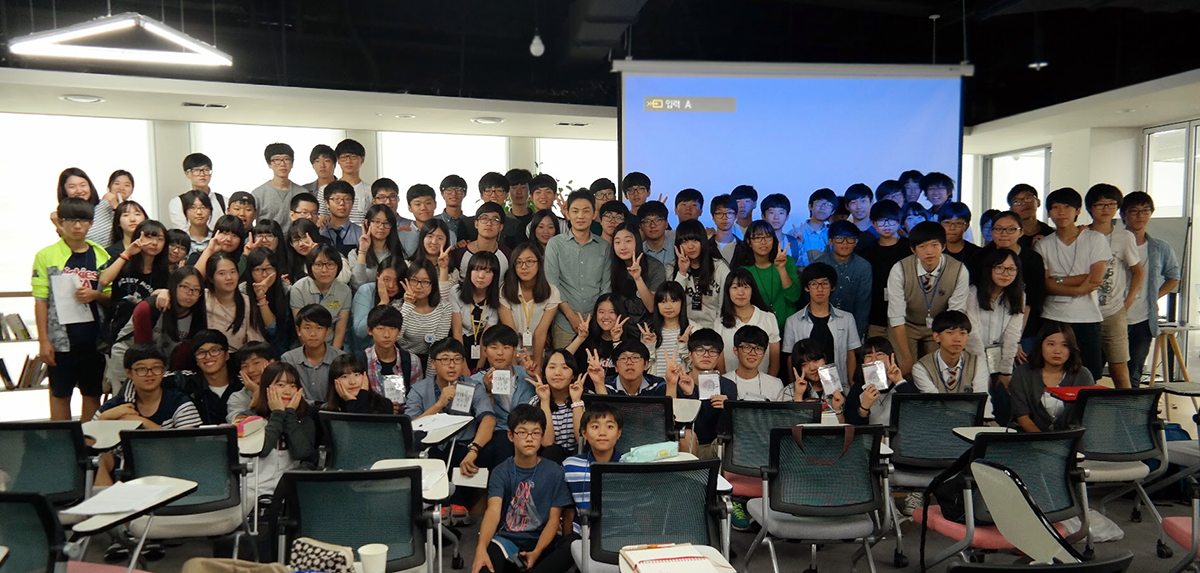In South Korea there have been several governmental announcements recently regarding the future of 3D printing. These top-down policies have outlined the big picture in regards to how the 3D printing industry in Korea should, or will, evolve. However, it may take a while for the majority of people to realize that 3D printers are actually all around us and that the 3D printing industry is moving forward apace.

A science teacher at Ye-Bong middle school in Namyangju, in Gyeonggi-do Province, named Choi Kyung Chul, implemented the idea in Korea. With the help of his colleagues and sponsors, he formed a committee to plan, organize, and proceed with the project. At this year’s fair, he was crazy busy welcoming guests, other colleagues, and leading the main event, but he was still generous enough to spare some time to sit down with me for a chat to explain what he was doing and why.
He had experience last year at a smaller event in a city called Namyangju, in Gyeonggi-do Province. This year, he decided to create a similar event, but on a bigger scale, and to utilize 3D printing to allow for more freedom of design and fabrication for the participants. By combining emerging 3D printing technologies, the automobile industry and manufacturing miniature F1 cars, participants learn about design, manufacturing and marketing. It was a huge improvement over the last iteration of the event, not least because previously students were creating their physical models by carving them out of wood — not that there is anything wrong with traditional and subtractive processes — but it does not teach the students about the new manufacturing methods available to them.
With his experience and social network, he touched base with some major 3D printing manufacturers/sellers, Open Creators, SUPER3DM, and Lab C and earned their support. You see, it turns out that he is an active maker and one of the initial members of OpenCreators and attended their workshops back when they were making their first model, an Np Mendel. Interestingly, that was the time that the very first 3D printer was about to come out in Korea.
From a high number of teams, 17 are selected by screening their applications and written plans. Each team consisted of 3 to 5 students, with each student having their own role. The fair started with an orientation, and afterwards the participants were divided into four groups; CEOs, engineers, designers and marketers. Each group learned from a guest speaker who was highly active in the field of their expertise. They then converged into one group and listened to a popular motivational speaker. Afterwards, the students were shown the practical know-how of designing, marketing, 3D printing and managing from experts. Lastly they had time to experience — and play — with a 3D printer, either a Flashforge or Almond.
The grand final will be held on 8th November, when each team will compete by demonstrating their design, creativity, construction, marketing, and racing performance.
Mr. Choi, who described himself as a ‘normal’ teacher, does not seem like one at all to me. He told me that one of the biggest motivations for him to lead such a big event was that he has always wanted to conduct education in a way that does not bore students. He pursues interesting and extraordinary education ideas that he hopes can stir up students’ imaginations. Based on what I saw, he was doing just that. The students responded with passion and frequently their discussions became quite heated. One of the students I met at the fair told me that since they are racing toward a tangible goal, it is great fun to work together and have a sense of achievement.
Mr. Choi wants to expand the competition nationwide if the show ends successfully. He added that 3D printing, as an emerging technology in Korea, is a great tool to encourage students’ creativity and imagination. He also wants to see the education system in Korea become a better combination of top-down and grass roots thinking. He hopes that what he is doing plays a pivotal role in the grass roots part of education — by benefiting students and influencing their futures.



